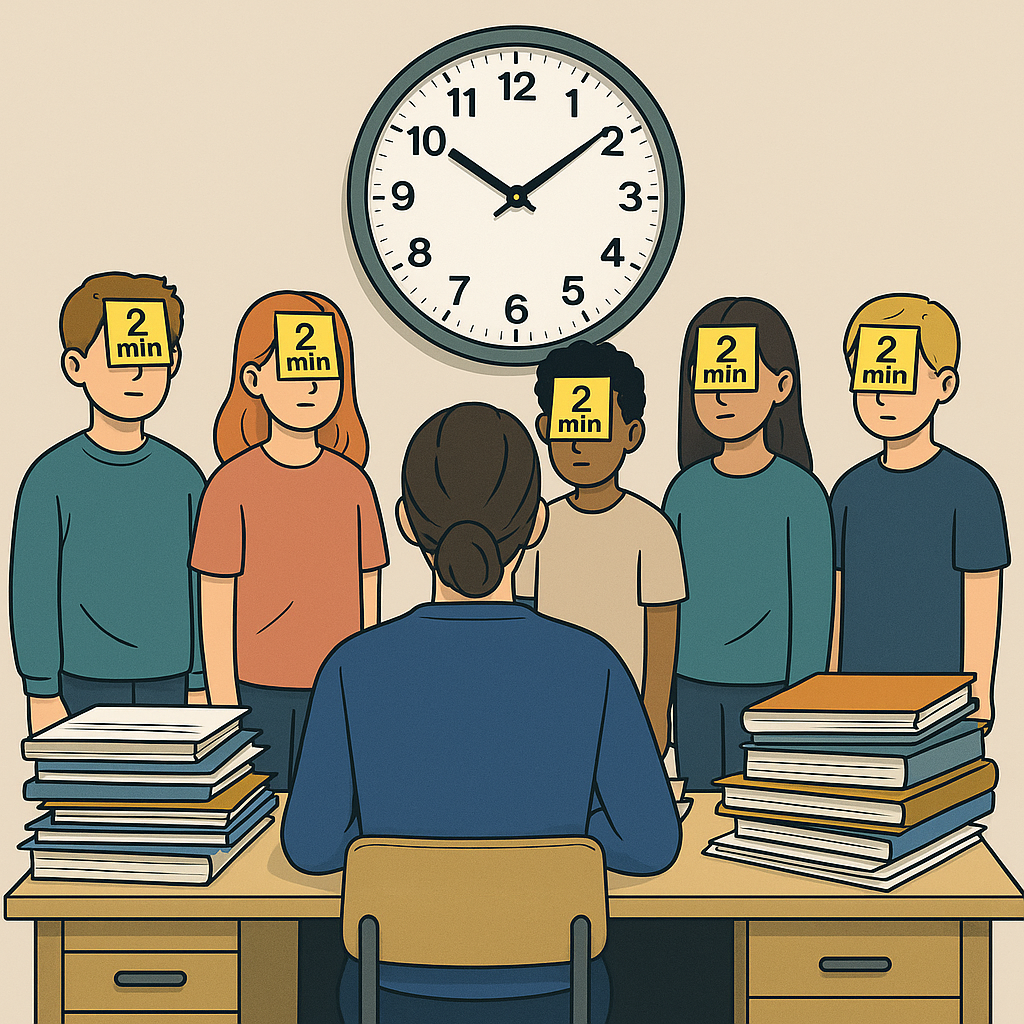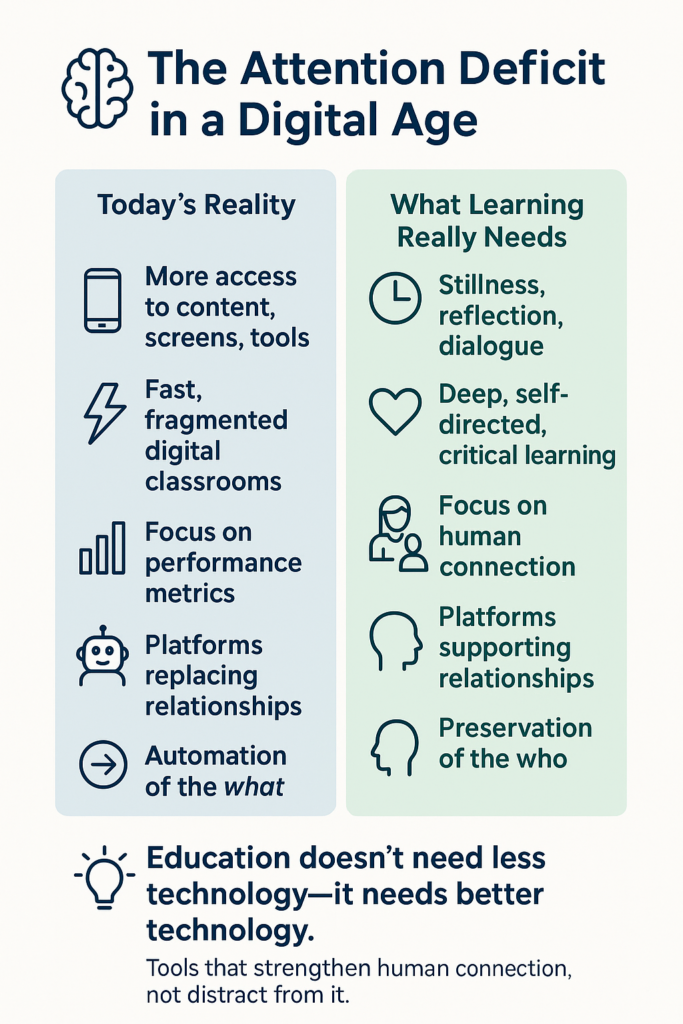A form of ADHD – Adult-Driven Hyper Disconnection
As a teacher, parent, and founder of a learning platform, I am a keen supporter of the integrative school system. The wide variation of learners, strengths, and needs in the same classroom creates learning opportunities, social connection, and potential. These important processes require professional attention and a lot of time. For many teachers one-to-one time with students is lacking. We are talking about just a few disappearing moments per day. Yet many children struggle with attention deficits and would need more, not less, of it. And teachers know that managing and teaching a diverse group of learners requires personal attention for each one.
The real crisis is an attention deficit in the system itself. When budgets shrink, attention seems easy to cut. But it is the foundation. Without it, no learning happens. Most teachers in public schools are unable to offer such sustained attention—and neither can the support system. This, too, is a form of ADHD: Adult-Driven Hyper Disconnection.
If today’s classrooms suffer from an attention deficit, the cure is not faster tools or more content. It’s slower moments, human ones. EdTech can’t create these moments, but it can make space for them by reducing workload and freeing time for one-to-ones between teachers and students. Education begins with attention. That must be our baseline. Let’s take a closer look.

The Attention Deficit in a Digital Age
We now face a paradox. In the AI age, students have more access to content, more screens, more tools – and less connection. The digital classroom is often fast, fragmented, and focused on performance metrics. Yet deep, repetitive, self-directed, critical learning requires stillness, reflection, and dialogue.
Don’t get me wrong: digital platforms are not inherently bad. But when they replace rather than support relationships, they widen the gap. They can automate the what, but they can’t replicate the who. What education needs is not less technology, but better technology – tools that strengthen human connection rather than distract from it.
Ways to reclaim Attention
Teachers across Europe report the same: ballooning class sizes, mounting paperwork, and emotional exhaustion. I have been a teacher myself. I created enduri with this reality in mind. It does not try to squeeze more into a teacher’s day—it lightens the load. By simplifying the cognitive clutter of planning and tracking, it makes space for real connection. enduri’s mission is to foster metacognitive skills, critical thinking, and learner autonomy, not to deliver more content. By taking over repetitive documentation, enduri enables teachers to focus on mentoring and one-to-one connection. It enables them to see the child beyond the data. enduri does not just work around the attention crisis. It responds to it directly.

Why Losing Attention Is Catastrophic
Simone Weil (1909–1943), the French philosopher and activist, wrote: “Attention is the rarest and purest form of generosity” (1). She was right, and research confirms it. A meta-analysis of 428 studies found that positive teacher–student relationships yield an average effect size of 0.47 on learning outcomes – more than many subject-specific interventions (2). OECD research confirms that students who feel seen and supported by their teachers demonstrate higher motivation, stronger emotional well-being, and greater persistence in their studies (3). Neuroscience underscores the cost of divided attention: when students or teachers are distracted, cognitive performance can drop by as much as 50% (4).
Simone Weil’s Gift of Generosity
What did Weil mean by attention as generosity? In essence, to pay attention is to say, “You matter.” Not because of your grades or behaviour, but because you are who you are. This generosity is not about giving answers; it is about being present. It is the teacher who notices the slight slump in a student’s posture and checks in. It is the moment of pause to acknowledge a child’s effort, even when the answer was wrong. These micro-moments build belonging.
Tools like enduri cannot replace the human part of this, but they can support it. When routine tasks are handled digitally, time and energy return to where they matter most: the student. Studies from the University of Cambridge show that when students experience genuine attention, levels of cortisol (the stress hormone) decrease. They also show improved cooperation and willingness to engage in challenging tasks (5). Attention is a catalyst for growth.
Final Thought: What Will Students Remember?
Students will not remember the platform.
They will not remember their Year 7 exam score.
They will remember who listened. Who noticed. Who believed in them.
Simone Weil reminds us that attention is a form of generosity. In that spirit, let us ensure our students receive more than lessons—let us ensure they receive presence.
Sources
- Stanford Encyclopedia of Philosophy – Simone Weil (Rozelle-Stone & Davis, rev. 2021). Link
- Education Horizons Blog – Teacher–student relationships are everything! (2023). Link
- OECD – Teacher support for student learning: Insights from PISA (Policy Paper No.124, 11 Jun 2025). Link
- Cult of Pedagogy Podcast Ep.244 Transcript – Blake Harvard (The Effortful Educator) on attention (2023). Link
- University of Cambridge – Positive teacher-student relationships boost good behaviour in teenagers (Obsuth et al., 9 Aug 2016). Link

